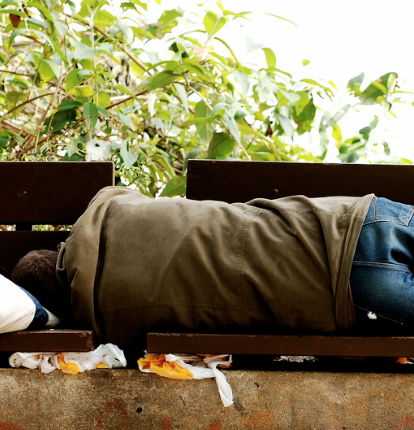How Can We Help the Homeless This Summer?

Living as a homeless person is hard enough as it is. However, when you have to endure harsh weather conditions, like a heatwave, many homeless individuals may find themselves in an even tougher situation. As a result, the underprivileged need our help more than ever during the summer months.
If you are thinking about volunteering your time, make sure you first educate yourself about some common illnesses and injuries that can be caused by extreme heat. This way, you can provide the best help possible to those in need. Furthermore, it’s vital to do some research about local organizations that help homeless individuals, including veterans. Understanding the situation of many homeless people out there can truly help you get them the right type of help.
Understanding the Symptoms of Heat Stroke vs. Heat Exhaustion
Once it starts to get hot outside, you’ll likely be thinking about the comfort level of homeless individuals with no way to escape the sun. As such, it’s important to understand what kinds of heat-related illnesses you might run into this summer. Noticing the differences between things like heat stroke and heat exhaustion can better help you aid individuals in discomfort. In addition, you may be able to help them receive necessary medical attention.
For example, someone with heat exhaustion may be feeling overheated, nauseous, increasingly sweaty, a general weakness of the body, an increased heart rate, and like they may even faint. However, someone experiencing heat stroke may find themselves in an even more extreme condition: Their core body temperature has usually risen to 103 degrees or higher, heart rate is quite rapid, skin begins to turn red, and oftentimes will lose consciousness altogether.
Knowing the difference between these conditions is essential this summer if you find a person that appears to have one of these illnesses. Someone with heat stroke should see a trained medical professional as soon as possible. On the other hand, someone with heat exhaustion can commonly overcome the issue if they find a cool place to lower their body temperature. Finding somewhere indoors or at least in a shady place with cool drinks to lower their overall temperature may make them feel better. However, if extreme dizziness and/or vomiting continues, medical attention is recommended.
Offering cool drinks, ice packs, and finding acceptable cooler locations is a great start toward helping individuals stay cool. All of these things can help someone with heat exhaustion symptoms. However, for those who may need medical attention, it may be beneficial to offer information about any free or low-cost medical clinics in the area that may be able to better service their medical needs.
Other Heat Wave Health Hazards
What’s more, it could be beneficial to understand how an individual spends their day during these sweltering months. Someone who sleeps in a car or near asphalt that gets a lot of sun is much more likely to be consistently suffering from symptoms of heat exhaustion. This also brings up another medical issue that is very common during the hottest points of the summer or during a heat wave — burns.
Items in/on a hot car, various metal objects (even doors), asphalt, and many more objects can reach high temperatures during the summer. As a result, it becomes increasingly easy for a person to sustain a burn just by interacting with their surroundings. If someone has sustained extreme burns, they should seek medical attention as quickly as possible. For individuals who may have more minor burns, cleaning the area delicately, applying antibacterial ointment, and bandaging up the area is a good option. Simply providing such items and instruction to homeless individuals in your area can do a lot of good.
In addition, many homeless individuals don’t have access to the kind of clothing they need during the summer months. Oftentimes, people will suffer from heat exhaustion symptoms when they are wearing clothes that are simply too heavy. As such, donations of light, loose-fitting clothing and footwear can also help keep people cool, dry, and protected from burns on the hot asphalt.
Helping People Get the Care They Need
Something else you should be aware of if you’re planning to volunteer your time helping homeless individuals this summer has to do with mental illnesses and military care. Sadly, 8.6 percent of the U.S. homeless population are veterans. Many of these individuals have sustained injuries, are living with certain disabilities, and may have signs of PTSD and/or other mental illnesses. As such, it’s also a wonderful idea to think about partnering with or getting information about local veteran assistance organizations.
Veterans (and other homeless individuals) may need additional assistance outside of physical objects you might be able to donate to them. It’s important to understand this point before you decide to offer your help. Being educated about local veterans organizations, veterans hospitals, free clinics, etc. will truly help you to understand the position many homeless people find themselves in. You just may be able to offer information about available help to individuals that they didn’t know they had access to. So, just as it is extremely important to offer material objects and simple items of aid, it is equally as crucial to understand what other challenges people may be facing and how you can assist them.
Helping the homeless is a wonderful way to spend your spare time any time of year. However, it’s incredibly important to understand what kind of challenges people may be facing — specifically in the summer months. If you decide to offer your assistance with these details in mind, you’ll be able to offer the best possible care for those who need it most.

